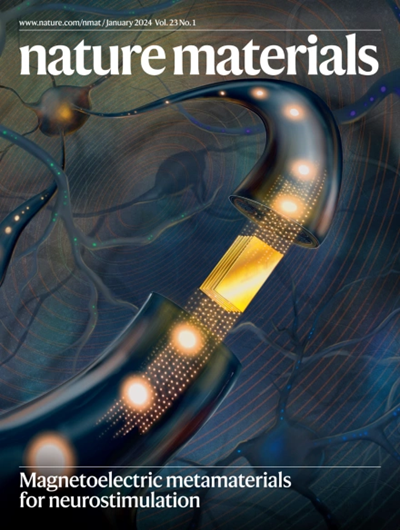Nonlinear transport in non-centrosymmetric systems
IF 38.5
1区 材料科学
Q1 CHEMISTRY, PHYSICAL
引用次数: 0
Abstract
Ohm’s law has been a cornerstone of electronics since its experimental discovery. This law establishes that, in a conductive system, the voltage is directly proportional to the current. Even when time-reversal symmetry is disrupted, leading to the emergence of magnetoresistance and Hall effects, the linear relationship between voltage and current remains intact. However, recent experiments have demonstrated a breakdown of Ohm’s law in non-centrosymmetric structures. In these systems, nonlinear transport effects are permitted with quadratic scaling between voltages and currents. Here we review the main demonstrations of nonlinear transport in non-centrosymmetric systems, analysing the connection between nonlinear behaviour and the system’s symmetry. We also investigate the microscopic mechanisms driving these effects, such as Berry curvature dipole and Berry connection polarizability. Finally, we highlight potential applications of nonlinear transport in spintronics and energy harvesting. There has been substantial progress in observing and understanding nonlinear transport properties of non-centrosymmetric materials in recent years. This Review surveys the interplay between symmetry and nonlinear phenomena, and how nonlinear transport probes quantum properties of solids. The authors also highlight the potential applications of these nonlinear transport effects in fields such as spintronics, orbitronics and energy harvesting.


非中心对称系统中的非线性输运
欧姆定律自实验发现以来一直是电子学的基石。这个定律表明,在导电系统中,电压与电流成正比。即使时间反转对称性被破坏,导致磁阻和霍尔效应的出现,电压和电流之间的线性关系仍然保持不变。然而,最近的实验已经证明了欧姆定律在非中心对称结构中的破坏。在这些系统中,非线性输运效应在电压和电流之间具有二次标度。本文回顾了非中心对称系统中非线性输运的主要证明,分析了非线性行为与系统对称性之间的联系。我们还研究了驱动这些效应的微观机制,如Berry曲率偶极子和Berry连接极化率。最后,我们强调了非线性输运在自旋电子学和能量收集方面的潜在应用。
本文章由计算机程序翻译,如有差异,请以英文原文为准。
求助全文
约1分钟内获得全文
求助全文
来源期刊

Nature Materials
工程技术-材料科学:综合
CiteScore
62.20
自引率
0.70%
发文量
221
审稿时长
3.2 months
期刊介绍:
Nature Materials is a monthly multi-disciplinary journal aimed at bringing together cutting-edge research across the entire spectrum of materials science and engineering. It covers all applied and fundamental aspects of the synthesis/processing, structure/composition, properties, and performance of materials. The journal recognizes that materials research has an increasing impact on classical disciplines such as physics, chemistry, and biology.
Additionally, Nature Materials provides a forum for the development of a common identity among materials scientists and encourages interdisciplinary collaboration. It takes an integrated and balanced approach to all areas of materials research, fostering the exchange of ideas between scientists involved in different disciplines.
Nature Materials is an invaluable resource for scientists in academia and industry who are active in discovering and developing materials and materials-related concepts. It offers engaging and informative papers of exceptional significance and quality, with the aim of influencing the development of society in the future.
 求助内容:
求助内容: 应助结果提醒方式:
应助结果提醒方式:


